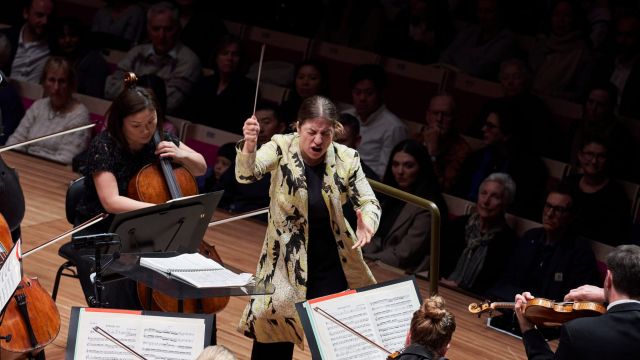Dalia Stasevska Conducts Sibelius’ 5th
The call of birds and contemplations of nature sweep throughout this beautiful SSO concert of three evocative Finnish compositions, ending with the oldest, Symphony No.5 by Finland’s greatest composer, Jean Sibelius.
Before raising the baton, diminutive guest conductor Dalia Stasevska shared with us her enthusiasm for the man she calls the last of the Romantic composers, and how esteemed Sibelius was as a defiant patriotic force when Finland was under the yoke of Tsarist Russia. Stasevska is a musical devotee of Finland but she’s also much honoured in her birth country, Ukraine.
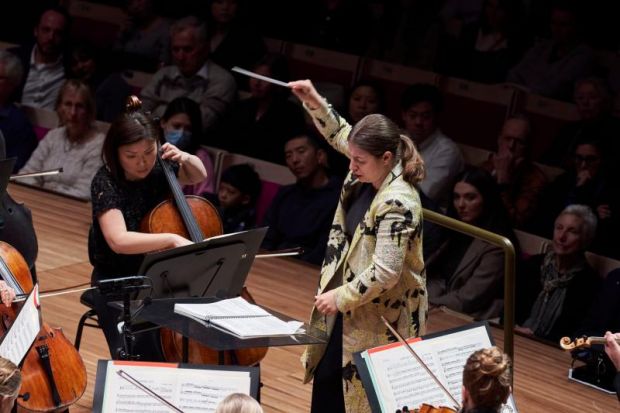
Sibelius wrote his Symphony No.5 in 1915 but spent four years of war revising it until he conducted the perfected and much performed final version.
This optimistic concert began with Cantus Arcticus for which compatriot Einojuhani Rautavaara recorded the bird song of Finland’s Arctic marshes and coastline, incorporating this natural sound (calling them his ‘soloists’!) into his wonderfully spacious instrumental writing. He begins with two flutes near indistinguishable from the birds, features a shore-lark as a ‘ghost-bird’ in a second darker movement, Melancholy, and ends the final movement with the climbing grandeur of swans migrating. Sibelius too evokes with horns this same image of migrating birds; it’s a seasonal landmark for every Finn.
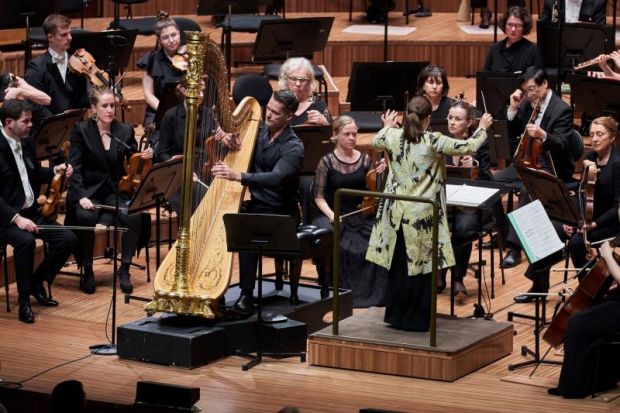
Kaija Saariaho wrote the second work, Trans, her harp concerto, specifically for the acclaimed French harpist Xavier de Maistre. At age 25, he was the first French musician to be admitted to the Wiener Philharmoniker and has since pursued boundary-breaking opportunities and compositions for the harp.
Trans is such a modern concerto, using more the harp’s upper strings, plucked by more obvious finger work, than the romantic strumming of lower strings, and with delicate but resonant conversations moving between the harp and various instrumental groups – but restrained from overpowering the harp. The final energetic playing by each of the same musical message was magical. Saariaho died of a brain tumour just last year.
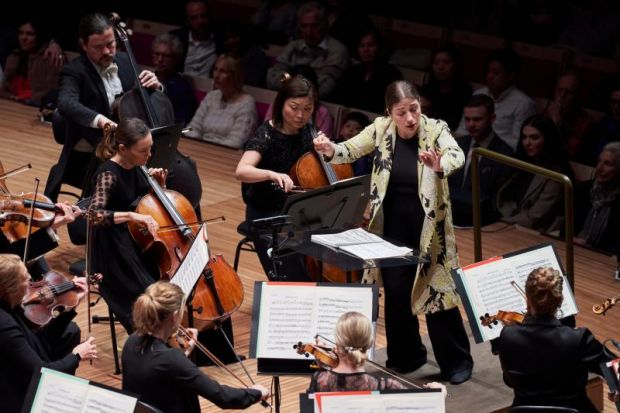
De Maistre’s solo encore, suggesting to me echoes from a fairground, was even more virtuosic and applauded.
Violins are the drivers in Sibelius’ Symphony, building ever new tiny melodic fragments within the orchestra, often thrashing furiously or turning sorrowful with the trumpets, or later leaping to a dancing lightness with the flutes. They create a whirlwind passage to a swinging horn theme and a spectacular full orchestration, ending with six jubilant chords, each separated by long silences which seem to sing.
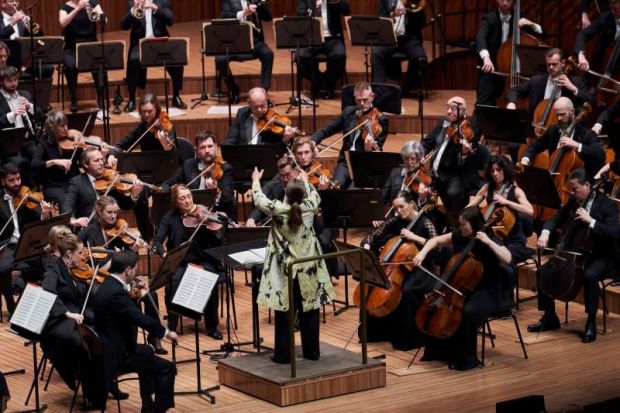
We remember Strasevska’s remarkable metaphysical explanation of what Sibelius saw through his finale. These SSO concerts are happily distinguished by conductors and players speaking directly to the audience.
Martin Portus
Images courtesy of Sydney Symphony Orchestra. Photographer: Jay Patel.
Subscribe to our E-Newsletter, buy our latest print edition or find a Performing Arts book at Book Nook.

